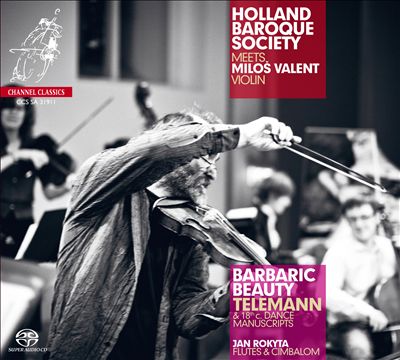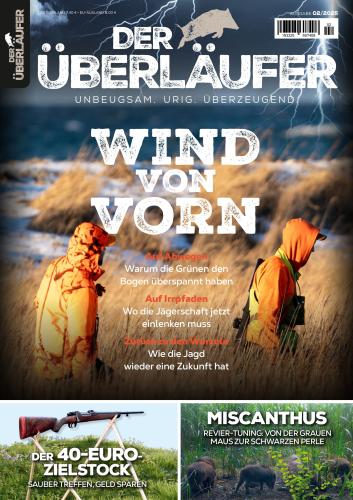
Jan Rokyta, Milos Valent – Telemann & 18th-Century Dance Manuscripts: Barbaric Beauty (2011)
FLAC (tracks) 24 bit/192 kHz | Front Cover | 2.38 GB
Genre: Classical | Official Digital Download – Source: Qobuz
It goes without saying that Telemann had a thorough command of the French and Italian styles. Countless ensembles, including ours, have played such pieces. In ‘Barbaric Beauty’ we follow a completely different path by focussing on Telemann’s Polish style. At least, this is how he described the pieces he wrote after discovering the music played along the Polish-Hungarian border. It was at the beginning of his career, when he was just 25 years old, that he heard sounds that were to inspire him throughout his life.
On this recording Holland Baroque Society meets Miloš Valent – specialist both in Baroque music and 18th-century Central- European folk music. They play folk music from the heart of Europe, and Baroque music influenced by folk music from Telemann, among others. This program demonstrates the centuries-old influence of ‘popular’ music on ‘art’ music: a kind of world-music avant la lettre. Supported by cimbalon-player and flautist Jan Rokyta, Holland Baroque Society and Valent show the influence of folk music on baroque art-music, and highlight two important aspects shared by both styles: ‘groove’ and improvisation. Alongside the Concerto ‘Polonois’, they present dance music from the folk-music collection Melodarium/ Szirmay-Keczer, melodies and dances from the Uhrovec Collection (1730), collections from which Telemann chose his favourite folk tunes. Beyond this, you never quite know what’ll happen when Miloš arrives…
Composer: Anonymous, Georg Philipp Telemann
Performer: Jan Rokyta, Milos Valent
Orchestra/Ensemble: Holland Baroque Society
Reviews:
Books on music history usually concentrate on the development of what we call ‘art music’ in Western Europe. The traditional or ‘folk’ music remains under the radar. That is understandable. Traditional music was usually not written down; it is possible that many musicians couldn’t read or write. Their repertoire was handed down orally and through a process of listening and imitation. This is also the reason traditional music has no fixed form: it could differ from one generation to the next, and from one region to another. Moreover, improvisation was an organic part of performances of traditional music. Several manuscripts from the 18th century with songs and dances have been preserved, but even these can only give a rudimentary idea of how the music actually sounded.
The study of such manuscripts and of traditional music in general is important, though, especially because this kind of music has found its way into the works of ‘classical’ composers. The English virginalists used popular songs for variations, and so did Italian composers. In the first half of the 18th century the audiences in London were intrigued by Scottish and Irish folksongs, and composers responded by integrating them in their own compositions. At about the same time Georg Philipp Telemann also became acquainted with traditional music. He is one of the few composers who was very outspoken about his fascination with this repertoire. In 1704 he became Kapellmeister in Sorau (today: Zary in Poland). “When the court resided for six months in Plesse and Krakow I became acquainted with both Polish music and the music of the Hanaks. This in all its barbaric beauty. (…) One can hardly imagine the brilliant ideas the wind players and violinists brought forth during the improvisations at moments when the dancers were allowed to rest”. He was clearly strongly impressed by what he heard: “If you were to write down all that was played there, after a week you would have enough ideas for the rest of your life. If you know to turn it to your own advantage, there is so much good to be had from this music”.
Telemann obviously knew very well how to turn this traditional music to his advantage. It turns up regularly in his own compositions, for instance in various orchestral suites. In modern performances these influences are not always clearly traceable. It is the merit of this disc that it approaches these elements in Telemann’s compositions from the angle of traditional music. As a result the performance of some movements from two concertos which are known as concerto polonois is quite different from what we mostly hear. Telemann himself has written down a number of dances which are collected in a manuscript known as Danse d’Polonie, and it is quite possible that this is the result of what he had heard. In the programme recorded by the Holland Baroque Society several manuscripts with traditional music are used. The result is a mixture of traditional and ‘art’ music which shows that the line between the two is fluid.
Programmes like this can easily go terribly wrong. That is the case when musicians which have enjoyed a classical education try to perform traditional music without having a real feeling for it. On the other hand, if musicians from the world of ‘folk’ music are going to play ‘art’ music the result is often just as disastrous. What we have here is a happy marriage of traditional and ‘art’ music, mainly thanks to Milos Valent who is rooted in both. As a violinist he plays in many early music ensembles, like Tragicomedia, Teatro Lirico, Concerto Copenhagen and the Netherlands Bach Society. But he has also a vast experience in playing folk music. He seems to be a very inspiring musician as he is able to pass on his knowledge and enthusiasm to the members of the Holland Baroque Society.
This ensemble chooses not to have a conductor and regularly work with guest directors. Among them have been the likes of Alexis Kossenko, Matthew Halls, Sergio Azzolini and Dorothee Oberlinger. A precondition is a spirit of openness towards the ideas of those artists. In this case that has led to a way of performing they are probably not used to. The performance of traditional music is to some extent speculative, because there are no treatises on performance practice. So whether we hear the dances from the various manuscripts as they were played at the time is impossible to say. But the programme as a whole makes a very convincing impression and the folk music sounds authentic.
The booklet includes informative liner-notes by Judith Steenbrink. Although the sources of the pieces of folk music are given, I would have liked more details, like when and where they were assembled and where they are preserved now. The programme includes movements from larger compositions by Telemann, but they are not indentified and there are no catalogue numbers.
In many ways this disc is an ear-opener. Never before I have been so much aware of the connection between the ‘classical’ and the ‘traditional’. This is definitely a subject which needs to be more thoroughly explored. This disc is an excellent contribution.
Tracklist:
1 – Perpetuum Mobile / Concerto Polonois in G: Dolce / Polonaise in D / Dance 90 / Polonesie / Pode Dworem D 79 / Polonesie I, II / Melodiarium / Concerto Polonois in B: Largo / Melodiurium G 11 / Concert
2 – Les Janissaires / Nota Kurucz I + II / Zela Trovke
3 – Mourky / Alkmaerder Hout, Murky, Overgaan Van Door-Nik / Les Moscovites / Dance 298 / Hungaricus 22
4 – Dance 322 / Dopschensis / Adagio / Ach Ma Myla Co Myslis / Dance 325 / Melodiarium B-14 / Hungaricus 35
5 – Hanaquoise / Songs: Dalat Mu Dala, Dobras Bila Kdy Te Milovali / Hanac I-II-III, Vivement
6 – Two Dances / En Kitzvo / Two Dances
7 – Marche / Verbung per il violino / Ungarici No. 2,3,5 Hungarice / Hungaricus 34
8 – Mezzetin en Turc / Dance 277 / Les Turcs
Download:
mqs.link_HllandBarqueScietyMeetsMilValentBarbaricBeauty24192.part1.rar
mqs.link_HllandBarqueScietyMeetsMilValentBarbaricBeauty24192.part2.rar
mqs.link_HllandBarqueScietyMeetsMilValentBarbaricBeauty24192.part3.rar




















![Jan Tomasz Adamus - Pergolesi: Adriano in Siria (2016) [FLAC 24bit/96kHz] Jan Tomasz Adamus - Pergolesi: Adriano in Siria (2016) [FLAC 24bit/96kHz]](https://getimg.link/images/imgimgimg/uploads/2018/02/Ej0eR7Y.jpg)

![Marco Schiavo & Sergio Marchegiani - Brahms: Hungarian Dances - Waltzes, Op. 39 (2018) [FLAC 24bit/96kHz] Marco Schiavo & Sergio Marchegiani - Brahms: Hungarian Dances - Waltzes, Op. 39 (2018) [FLAC 24bit/96kHz]](https://getimg.link/images/imgimgimg/uploads/2019/12/UGss5XE.jpg)
![Rinaldo Alessandrini & Concerto Italiano - Bach: Variations on Variations (Arr. for Baroque Ensemble) (2017) [Qobuz FLAC 24bit/88,2kHz] Rinaldo Alessandrini & Concerto Italiano - Bach: Variations on Variations (Arr. for Baroque Ensemble) (2017) [Qobuz FLAC 24bit/88,2kHz]](https://getimg.link/images/imgimgimg/uploads/2018/07/5CtvYYk.jpg)
![Cyprien Katsaris & Helene Mercier - Brahms: 21 Hungarian Dances & 16 Waltzes for Piano Four (2018) [FLAC 24bit/44,1kHz] Cyprien Katsaris & Helene Mercier - Brahms: 21 Hungarian Dances & 16 Waltzes for Piano Four (2018) [FLAC 24bit/44,1kHz]](https://getimg.link/images/imgimgimg/uploads/2019/04/JRNlUSi.jpg)
![Zuzana Ruzickova - J.S. Bach: The Complete Keyboard Works (2016) [FLAC 24bit/96kHz] Zuzana Ruzickova - J.S. Bach: The Complete Keyboard Works (2016) [FLAC 24bit/96kHz]](https://getimg.link/images/imgimgimg/uploads/2018/09/r94XYtX.jpg)
![Max Emanuel Cencic - Handel: Ottone, HWV 15 (2017) [Qobuz FLAC 24bit/96kHz] Max Emanuel Cencic - Handel: Ottone, HWV 15 (2017) [Qobuz FLAC 24bit/96kHz]](https://getimg.link/images/imgimgimg/uploads/2017/11/9uXCAkQ.jpg)
![Gianluca Luisi - Bach: French Suites, BWV 812-817 (2018) [FLAC 24bit/88,2kHz] Gianluca Luisi - Bach: French Suites, BWV 812-817 (2018) [FLAC 24bit/88,2kHz]](https://getimg.link/images/imgimgimg/uploads/2019/10/LIyhrow.jpg)
![Pacifica Quartet - Dmitri Shostakovich and his Contemporaries: The Soviet Experience Vol. 1-4 (2011-2013) [24bit FLAC] Pacifica Quartet - Dmitri Shostakovich and his Contemporaries: The Soviet Experience Vol. 1-4 (2011-2013) [24bit FLAC]](https://getimg.link/images/imgimgimg/uploads/2017/07/ntIbtOp.jpg)
![Itzhak Perlman - The Complete Warner Recordings 1972-1980 (2015) [FLAC 24bit/96kHz] Itzhak Perlman - The Complete Warner Recordings 1972-1980 (2015) [FLAC 24bit/96kHz]](https://getimg.link/images/imgimgimg/uploads/2019/12/IpmBmeR.jpg)
![Vladimir Ashkenazy - Bach: French Suites, BWV 812-817 (2017) [Qobuz FLAC 24bit/96kHz] Vladimir Ashkenazy - Bach: French Suites, BWV 812-817 (2017) [Qobuz FLAC 24bit/96kHz]](https://getimg.link/images/imgimgimg/uploads/2017/12/fibDaF8.jpg)
![Maria Callas - Remastered The Complete Studio Recordings 1949-1969 (2014) [Qobuz FLAC 24bit/96kHz] Maria Callas - Remastered The Complete Studio Recordings 1949-1969 (2014) [Qobuz FLAC 24bit/96kHz]](https://getimg.link/images/imgimgimg/uploads/2018/12/Vw7IHlv-1.jpg)
![Murray Perahia - Bach: The French Suites (2016) [FLAC 24bit/96kHz] Murray Perahia - Bach: The French Suites (2016) [FLAC 24bit/96kHz]](https://getimg.link/images/imgimgimg/uploads/2018/03/7OIXrV4.jpg)
![Andreas Ottensamer - Brahms: The Hungarian Connection (2015) [HRA FLAC 24bit/96kHz] Andreas Ottensamer - Brahms: The Hungarian Connection (2015) [HRA FLAC 24bit/96kHz]](https://getimg.link/images/imgimgimg/uploads/2016/02/ftIMofr.jpg)
![Rachel Podger, Holland Baroque Society - Vivaldi: La Cetra, Op. 9 (2012) [DSF DSD64/2.82MHz] Rachel Podger, Holland Baroque Society - Vivaldi: La Cetra, Op. 9 (2012) [DSF DSD64/2.82MHz]](https://getimg.link/images/imgimgimg/uploads/2018/08/KCB6GDN.jpg)